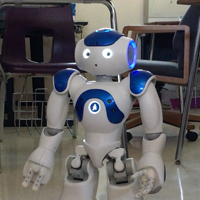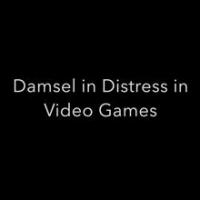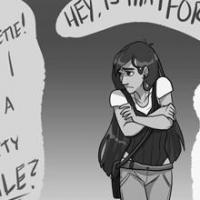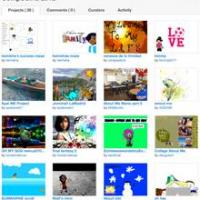Janelle talks about CompuGirlsIn this video Janelle talks about her favorite parts of the program and the benefits of being a CompuGirl. |
|
Co-Robots for CompuGirls (CR4CG) research presentationsIn these videos, COMPUGIRLS, with the help of NAO Robots which they programmed, present their research findings on the subjects of child labor, child brides, and LGBT rights and discrimination. |
|
Co-Robots for CompuGirls (CR4CG) I Am PoemsIn these videos, COMPUGIRLS present their I Am Poems with the help of NAO Robots which they programmed. |
|
Sadie Nash leadership project CompuGirls' digital documentaryThis is an example of one of the digital documentary projects completed by the girls. This particular projects takes on the subject of slut-shaming. |
|
Sadie Nash leadership project CompuGirls' digital documentaryThis is an example of one of the digital documentary projects completed by the girls. This particular projects takes on the subject of the damsel in distress in video games. |
|
Sadie Nash leadership project CompuGirls' digital documentaryThis is an example of one of the digital documentary projects completed by the girls. This particular projects takes on the subject of catcalling. |
|
Denver CompuGirls' digital documentaryThis is an example of one of the digital documentary projects that was completed by the girls. This particular projects takes on the subject of whaling. The girls work on different aspects of technology, including learning how to use digital cameras, several types of software and the different tools on the Internet. For the program each girl must pick a partner and then a topic to research. These research projects must include a podcast, a video, evidence of their own research on the topic and five to 10 external sources. The research must also have both qualitative and quantitative components. In the process the girls learn how to do a well-researched project, how to work with partners and how to use technology to enhance the project. |
|
The CompuGirls 2012-2013 Scratch galleryWhat is Scratch?Scratch is a programming language and an online community where children can program and share interactive media such as stories, games, and animation with people from all over the world. As children create with Scratch, they learn to think creatively, work collaboratively, and reason systematically. Scratch is designed and maintained by the Lifelong Kindergarten group at the MIT Media Lab. Why Learn Scratch?Scratch helps young people learn to think creatively, reason systematically, and work collaboratively — essential skills for life in the 21st century. Scratch is a project of the Lifelong Kindergarten Group at the MIT Media Lab. With Scratch, you can program your own interactive stories, games, and animations — and share your creations with others in the online community. Scratch is designed with learning and education in mind. A wide variety of educators have been supporting Scratch creators since 2007, in both formal and informal learning environments – K-12 classroom teachers, educational and computer science researchers, librarians, museum educators, and parents. |
|
Janelle's Scratch projectScratch is a programming language and an online community where children can program and share interactive media such as stories, games, and animation with people from all over the world. As children create with Scratch, they learn to think creatively, work collaboratively, and reason systematically. Scratch is designed and maintained by the Lifelong Kindergarten group at the MIT Media Lab. |








